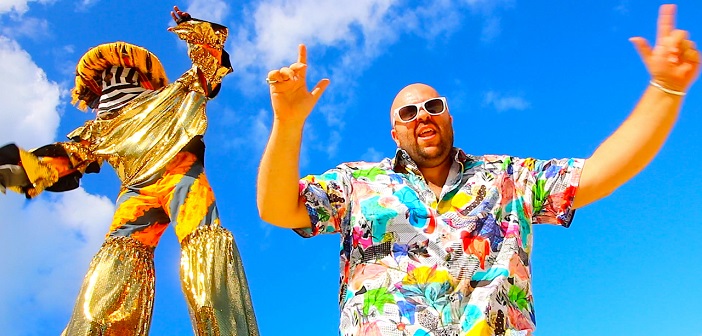By Rosana Zinola
Galeria Magazine – Montevideo Portal
–
Despite the pandemic, 2020 brought him his second Latin Grammy with Bellows and rope. What balance do you make of this year?
At the beginning of 2020 it was shaping up to be very good, I was beginning to enjoy the benefits of my first Latin Grammy in the category of best instrumental album for Balance, 2019. He had a long tour with Eddie Gómez through Sweden and Germany, concerts in Uruguay and the United States. With the Grammy, everything started to explode, they called me from everywhere and from day to night the covid came to us in New York and everything was canceled. Since March we entered this reality and then in November I won the second Grammy for best tango album with Bellows and rope.
With his wife, the visual artist Vicky Barranguet, they always went to the Grammy nomination ceremonies. Were you disappointed when you didn’t win?
This was the sixth ceremony. In the first four nominations we walked the red carpet, we went to the events and then we waited for that second when they announced you. The first four times we left thinking it was great to be nominated until the fifth time was the charm! Last year we lived it in Las Vegas and this time at home with our daughters Lola and Simone. We dressed up with masks and two friends came who had taken the covid-19 test. It was a different ceremony, we celebrated with our daughters and even with Olivia the dog.
Did it bother you that the Argentine media mistook your nationality when you won the last Grammy?
Uruguay gets all the credit when it comes to tango. Tango is recognized worldwide as Argentine music and in I don’t know how many newspapers put that “Fito Páez and Gustavo Casenave were the two Argentines who won the Grammy.” I clarified it and published my Uruguayan ID. Here is a Uruguayan musician fighting for Uruguayan tango and recording Uruguayan tangos with Uruguayan and Argentine musicians.
At what point did you make the decision to leave Uruguay?
I began to study music at the age of seven, at the age of 15 I was a listener at the University School of Music and when I formally enrolled at 18, I got the same teacher who had taught me at the age of seven and 15. Then, I started to I looked for a place to train and I finished at Berklee College, Boston, at 23. Basically I left Uruguay because I am sick of studying, I like to play, interpretation, composition and research, now I am writing a second book.
On January 5, he will be married for 25 years. How did you meet your wife?
I met Vicky the day she was born in Casmu 2, where I had also been born two years earlier, because my dad and hers were best friends. Our families have always been very close. We have been together for 30 years, to Vicky I owe all this we did together. We have an artistic life together, in short, we are one.
What do you rescue from your time in the reggae band Kongo Bongo?
Eternal friendship and the experience of having belonged to a professional group in Uruguay. Those years were unique, he sang, played the bass and at one point, the keyboard too.
What does it mean to be recognized as a Steinway artist?
The greatest honor, it is a great prestige to belong to the Steinway family along with 1,600 members such as Gustav Mahler, Arthur Rubinstein, Franz Liszt, Sergei Prokofiev. Since I was a kid I admired pianos and when I moved to New York I always wanted to see the factory, which is 15 blocks from home. One day I called and there was an eight and a half month wait for the tour. After six days the announcement reached me that I had been awarded this recognition. So when they gave me a badge, I told them that I had signed up for tour. The next day I was already visiting the factory, it was incredible. In addition, I have the privilege of accessing the Piano Bank, an inventory of around 500 pianos that they maintain in perfect condition to lend to Steinway artists. It was a pleasure to try some. The one I like the most is number 536, a total dream.
In his work he met several personalities. What happened the day Yo-Yo Ma lost her Stradivarius cello?
That day, in 1999, I was playing with him at a political party in Brooklyn. As he forgot his $ 2 million cello in a taxi, they mobilized the entire NYPD. They finally located him, but the act was three hours late. I remember that I was alone on stage sitting at the grand piano and a tall guy, dressed in a ball gown, approached him and I said: “Hi, what’s up? I’m the pianist.” In lunfardo I said: “All right, what are you doing? I’m the pianist.” He looks at me and replies: “Hi, I’m the vice president of the United States of America.” And laughs. I wanted to die, it was Vice President Al Gore. I froze and the second I saw that the Secret Service was there.
He is also a teacher. Did many students pass through your classrooms?
Yes and a very special one. One day, when I was director of the Jazz Department at the Harlem conservatory, I was told that a new student was coming. I open the door and it was Bette Midler! She had donated some pianos and wanted to study. We finished the first class and when we left there was a huge line to ask for autographs. In the second class he asked me to come to his house. I taught her for three years and accompanied her on various shows. Those things happen in New York.
–


